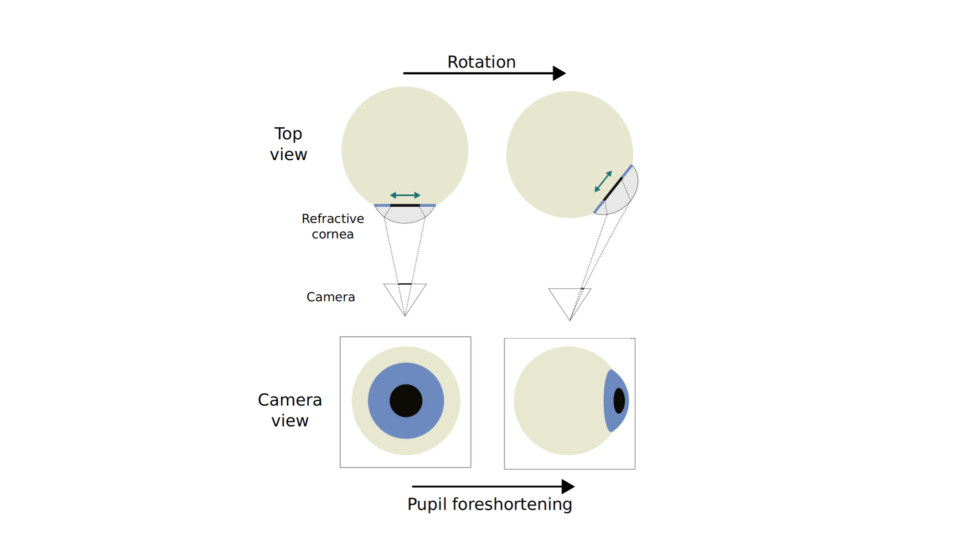Sizing it up – Measuring pupil size with head-mounted eye trackers
In order to allow for the right amount of light to enter our eyes, our pupils need to constantly change their size. External light conditions, however, are not the only influence. Our current physiological and psychological condition also has an effect. When we are tired, our pupils tend to shrink. When we are intensely focused on a mental task, they tend to dilate. Due to this intimate connection of pupil size with our internal state, over the last years there has been growing interest in the science of measuring pupil size and its changes over time. Researchers all over the world are developing this so-called pupillometry into diagnostic tools for a number of conditions.
In order for these approaches to be successful, accurate time-resolved pupil-size data needs to be available. At Pupil Labs we are developing, designing, building, and selling head-mounted eye trackers. Based on eye images recorded with near-eye cameras, our devices cannot only tell you where a person is looking, but they also can measure pupil size. The estimation of pupil size is a non-trivial task, however, mainly due to changes in eye appearance upon rotation of the eye and optical distortion effects introduced by the cornea. A number of approaches with various degrees of complexity have been proposed to address these challenges.
In a recent paper, my colleague Bernhard Petersch and I have compared three different methods for measuring pupil size by means of head-mounted eye trackers. Our work combined both theoretical considerations in the form of computer simulations, with carefully designed experiments using the Pupil Core eye tracker. We were excited and proud to find, that a method recently developed by us provided on average the most accurate pupil-size estimates.
If you are interested in the original manuscript, check it out under the following link:
B. Petersch, K. Dierkes. Gaze-angle dependency of pupil-size measurements in head-mounted eye tracking. In Behav. Res. Methods, 2021.

Leave a Reply